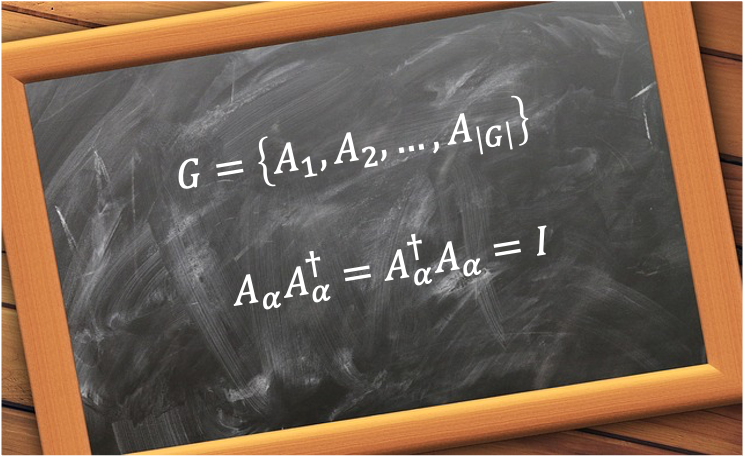A unitary representation of a group consists of elements that are unitary matrices.

Every representation of a group can be described in terms of unitary matrices. Specifically, matrices of a representation of a group can be expressed as unitary matrices via a common similarity transformation without any loss of generality. The proof is as follows:
Consider a group , where each element is an
matrix. Let’s construct a new matrix
out of the elements of
, where
.

Question
Proof the matrix identity .
Answer
Using the identity mentioned above,
Therefore, is a Hermitian matrix, which can be diagonalised by a unitary matrix
, i.e.
. Using
and the above identity again, we have,
or
where .
The diagonal elements of are
and hence, the diagonal elements of
are
. Moreover, one of the elements
of
is the identity matrix, with
and
. So,
.

Question
Why is ?
Answer
implies that
is a complex number. The modulus of a complex number
is
. Hence,
.
Let and
be
where ,
and
.
Consider a new set of matrices , where
. Since
is diagonal and
is real and positive, we have
. Therefore,
and
Substitute eq1 in the above equation and changing the dummy index from to
,

Question
Show that the set is also a representation of
.
Answer
If the set is also a representation of
, its elements must multiply according to the multiplication table of
. Since,
, we have
. The third equality ensures that the closure property of
is satisfied for the set
and hence the set
. In other words, the elements of
multiply according to the multiplication table of
.
If , then
. Since,
, the only possibility is that
for
. Therefore, the set
has the identity element.
To show that each has an inverse, we have
Finally, the associativity property of the group is evident, due to the fact that the set consists of matrices, which are associative.
Since the set is also a representation of
, we can express eq2 as:

Question
Explain why the 2nd equality in the above equation is valid.
Answer
According to the rearrangement theorem, each summand in is a unique element of
, which is denoted by
. Therefore, the 2nd equality in the equation before the Q&A holds.
Repeating the steps from eq2 for , we have
. Therefore,
is a unitary matrix.
Since ,
and
, we have
In other words, every element of a representation of
can undergo a similarity transformation that results in
, which is unitary. This is necessary in proving Schur’s first lemma and Schur’s second lemma.

Question
Show that the set is also a representation of
.
Answer
If the set is also a representation of
, its elements must multiply according to the multiplication table of
. Since
, we have
The third equality ensures that the closure property of is satisfied for the set
and hence the set
. In other words, the elements of
multiply according to the multiplication table of
.